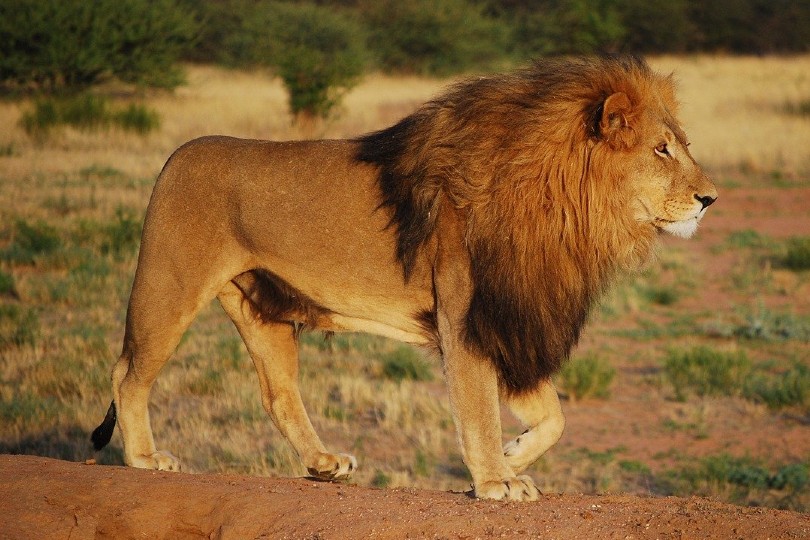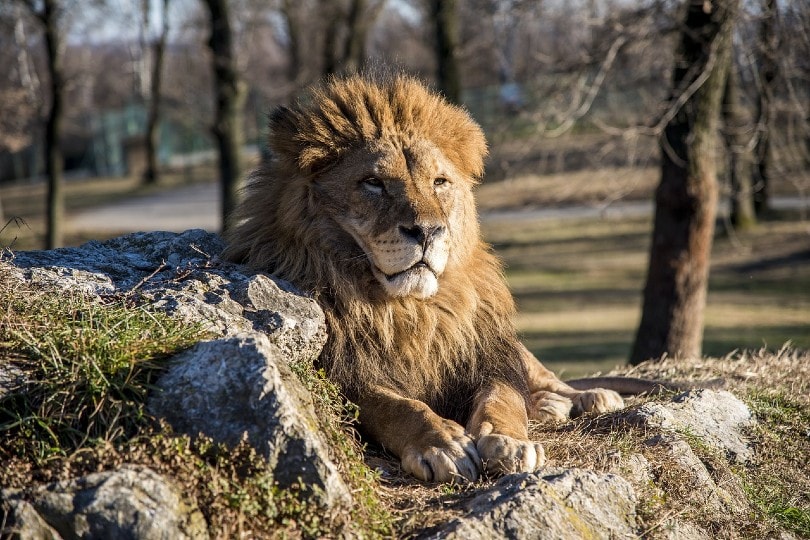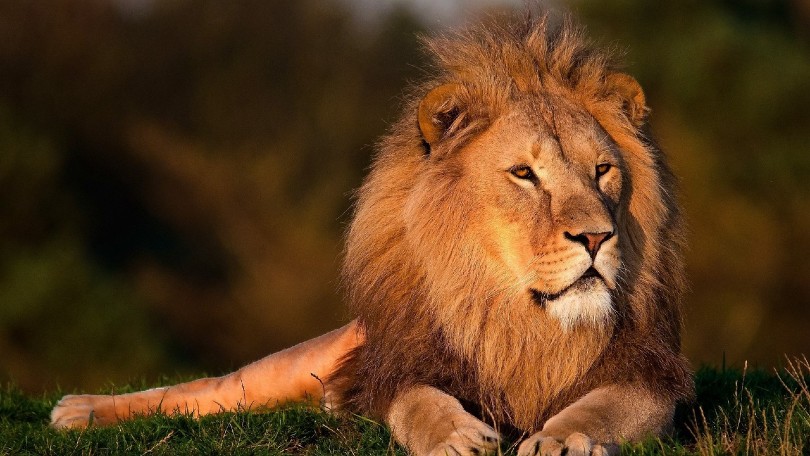Lions, tigers, and other big cats can’t purr. The structure of their hyoid bone, also called the hyoid apparatus1, differs from that of other feline species. Indeed, the presence of an elastic ligament connecting the hyoid bones to the skull is what prevents lions from purring like domestic cats. Interestingly, though, it is this anatomical difference that enables the king of the savannah to let out a deafening roar. In fact, the sound can be loud enough to be close to a human’s pain threshold2!
If you’re curious about what biologists and other experts know about cat purrs and roars, keep reading!

What Exactly Is the Hyoid Apparatus?
The hyoid apparatus is a term used in veterinary anatomy and refers to an assembly of bony, ligamentous, or cartilaginous parts, which starts from the throat to the bone of the skull. Its function is to hold the tongue, pharynx, and larynx in a soft and mobile way. The hyoid apparatus is made up of five hyoid bones, and its anatomical structure varies depending on the species.
Scientists have hypothesized that these differences in the hyoid structure would explain the different vocalizations in cat species:
- Felines with an elastic ligament in their hyoid structure are able to roar but not purr.
- Felines with a fully or mostly ossified hyoid can purr but not roar.
These differences in the anatomy of the hyoid bones led to the classification of cats into two distinct genera: “roaring cats” (Panthera) and “purring cats” (Felis).

Why Can’t Lions and Other Big Cats Purr?
In five of the big cats (lion, tiger, jaguar, leopard, and snow leopard), there is an elastic ligament located near the lateral muscles of the pharynx. It is this ligament that by stretching, gives the larynx enough flexibility to produce a powerful roar. Nevertheless, it is this same characteristic that prevents the lion from purring.
In the other species of felines (pumas, lynxes, ocelots, domestic cats), this elastic ligament is absent. That means the hyoid apparatus of domestic cats is mostly ossified, which creates the vibration required to generate a purr.
Are There Any Big Cats That Can Purr?
Yes! Cheetahs and pumas (also called mountain lions or cougars) also have a bony part in their hyoid apparatus, just like cats. They can purr but not roar. Also, the cheetah is in a separate genus altogether (Acinonyx) because it cannot fully retract its claws like other feline species.

The Importance of Vibrations: Why Cats Purr
Purring is achieved by a vibrating motion of the skeletal muscles in the larynx (also called the voice box and by blood flow to the larynx, which increases the volume of the organ.
It’s thought that cats evolved their purr as a way to communicate with each other and to show that they are non-threatening. Also, the vibrations from purring travel through the chest, abdomen, and even into the bones. This can have a therapeutic effect on the cat’s body, improving blood flow and reducing the effects of stress and anxiety. The vibrations are felt most strongly in the abdomen, which helps with digestion and is particularly important for nursing mothers, as they need to break down their milk to feed their kittens.
- See Also: Do Dogs Purr?

Summing Up
In short, lions and other big cats can’t purr because of the structure of their hyoid bone, and this inability to purr could be the indication of a different evolutionary path that led these cats to develop distinct and unique forms of communication.
Featured Image Credit: Robertgreene674, Pixabay
